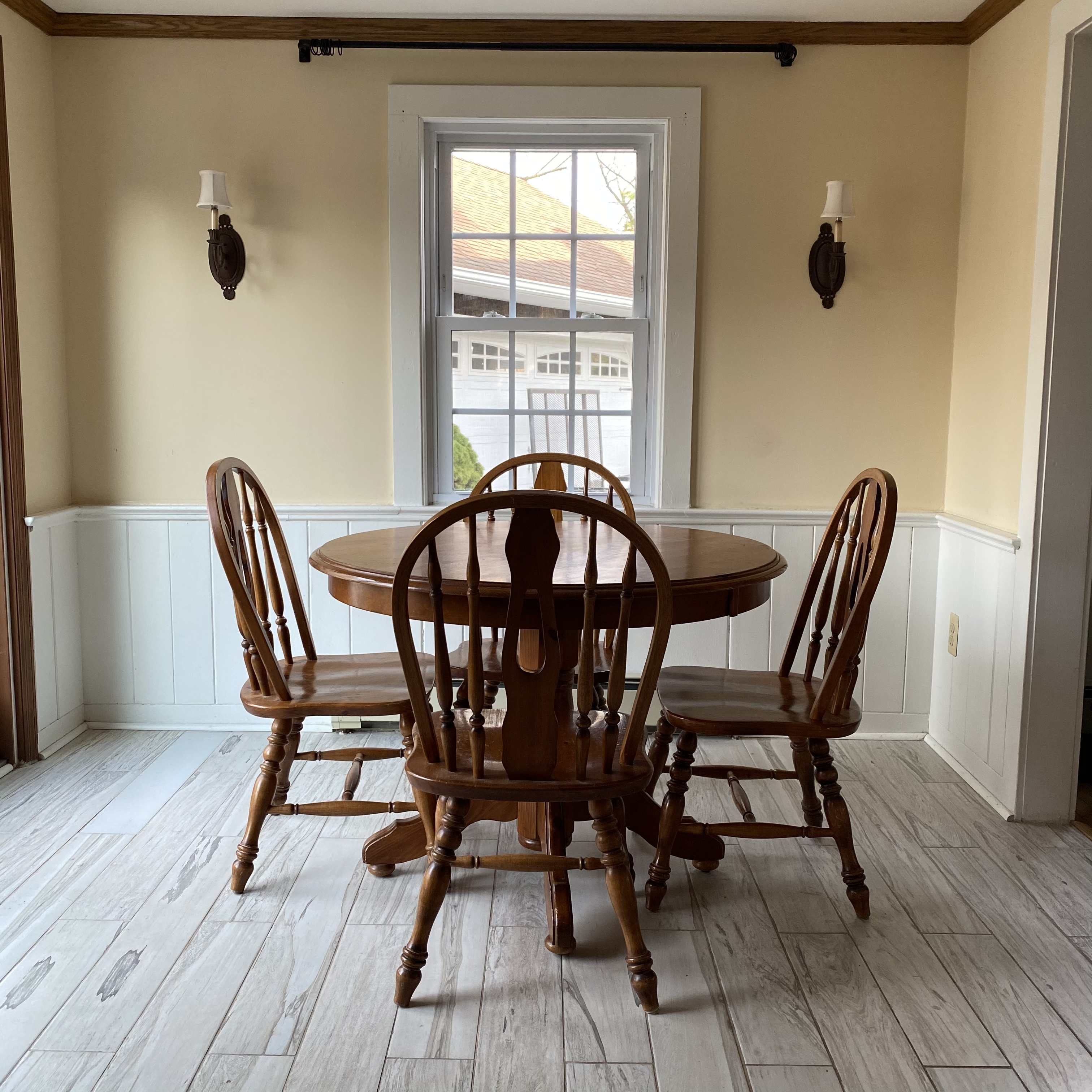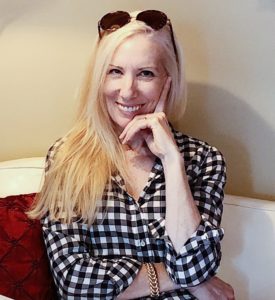I just finished making pinch pleated drapes for the kitchen eating area in our new old home. Why pinch pleats you ask? Because they always look crisp and neat no matter if the curtains are open or closed. They also add just a hint of formality which I like.
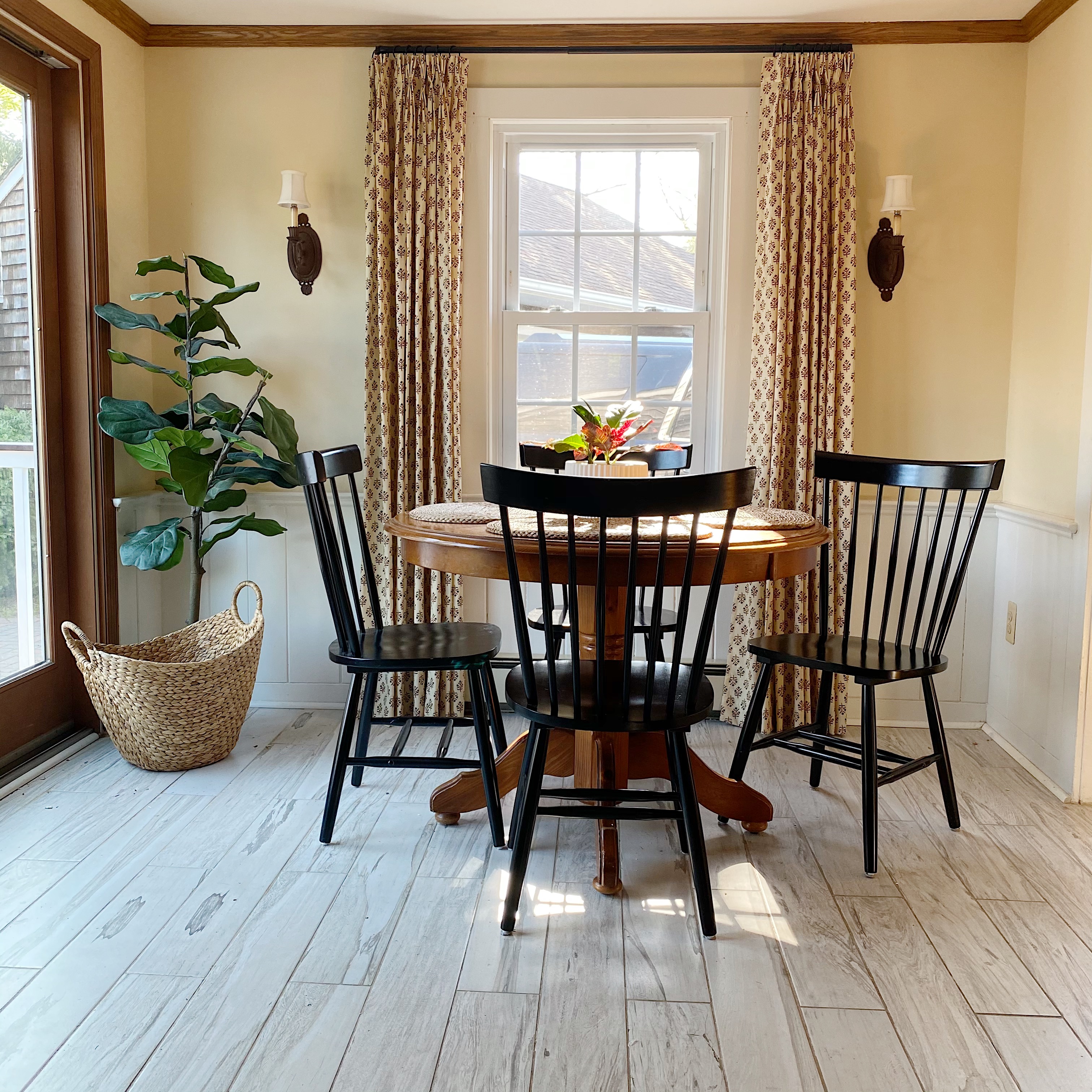
My short cut is to start with store bought curtains. It’s so much easier to source curtains than it is sourcing fabric and poring over hundreds of fabric samples. And I don’t have the time or the drapery sewing skills to make them from scratch. As far as buying pinch pleated drapes already made, they are very EXPENSIVE!
Here’s how to turn ready made curtains into high end pinch pleated drapes:
SUPPLIES
- curtain panels – total width approximately 2.5 times the window opening
- buckram – stiff interfacing for the top of curtain. Sold at Joann Fabrics by the yard.
- fabric marker
- seam ripper
STEPS
- First, you’ll most likely need to purchase more than just 2 curtain panels. A good rule of thumb is that the total width of your curtains needs to be about 2.5 times the width of your opening. My window is 38 inches wide but since I want the drapes to stack beyond the window by about 11 inches on each side, my total window opening is 60 inches (38 + 11 + 11 = 60). 2.5 times puts me in the 150 inch range for the combined panel width.
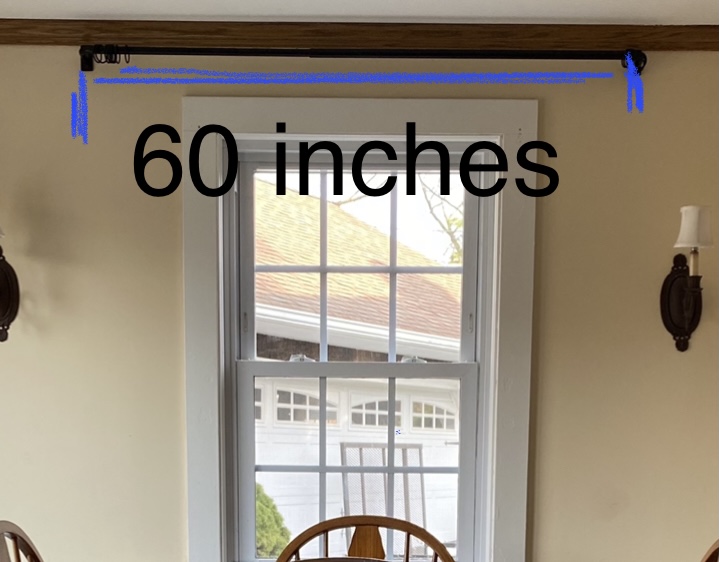
For my project, I purchased three of these curtain panels from Wayfair. (I love this vintage-inspired print!) Each one was 54 inches wide so 3 panels gave me a total of 162 inches (a little extra width does not hurt).
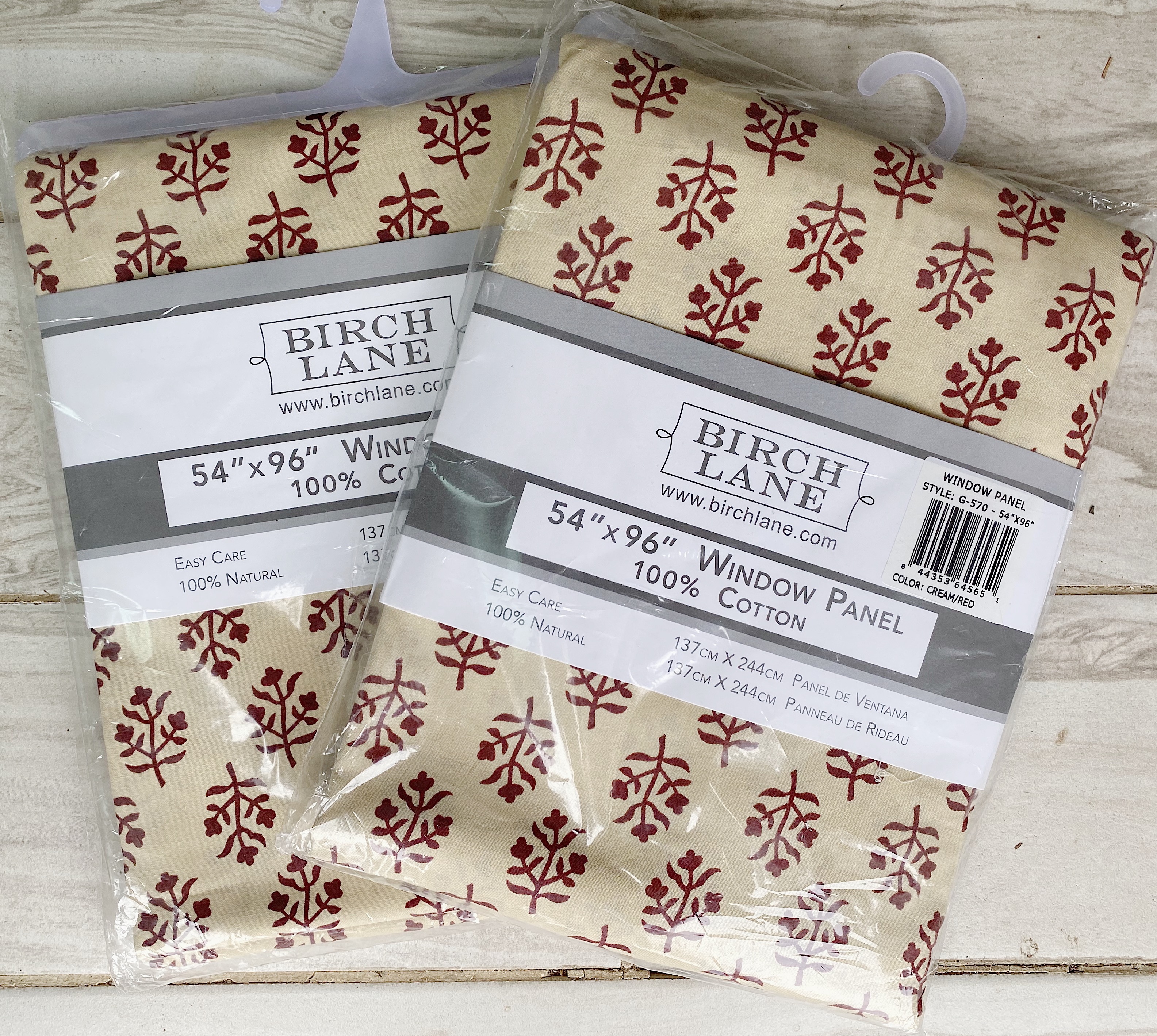
2. Using a seam ripper I opened up the curtain header (the top edge) of each of the three panels. This is necessary in order to insert the buckram later on in the process.
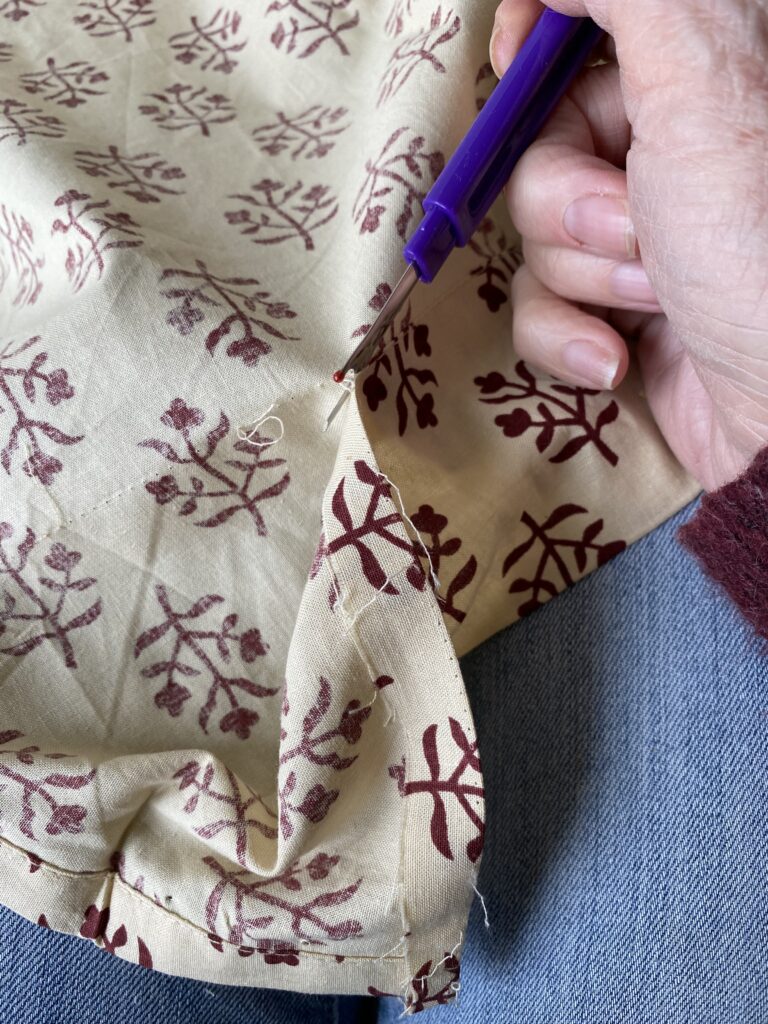
3. Next I cut one of the panels in half vertically and sewed the halves onto each of the other 2 panels. I pressed and sewed the raw edge that remains on one of the cut panels.
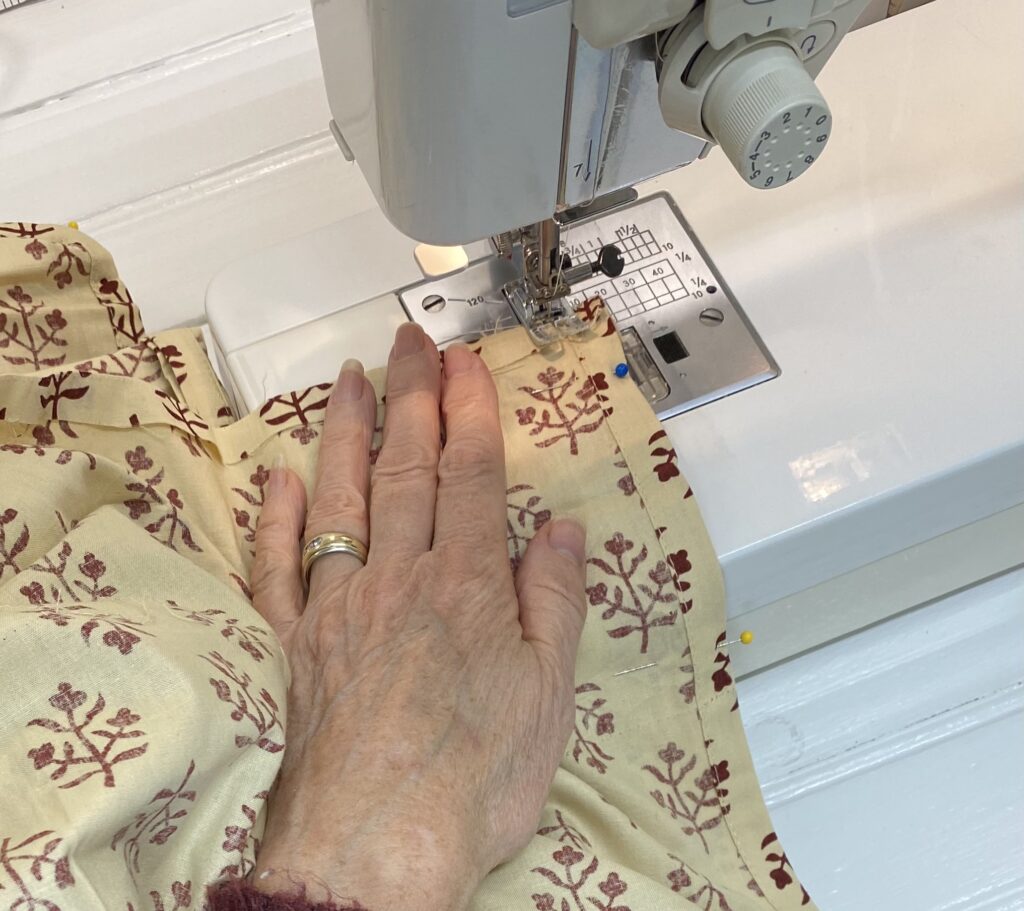
4. With my two curtain panels (each one now 79 inches wide after finishing the seams and edges), I laid the buckram (cut to the width of each panel) inside the top edge of each curtain panel, pinned and sewed it into place along the edge. It doesn’t matter if the buckram is slightly wider than the curtain header. You can trim it to fit before you insert it, but I didn’t bother. (I’m all about shortcuts!)
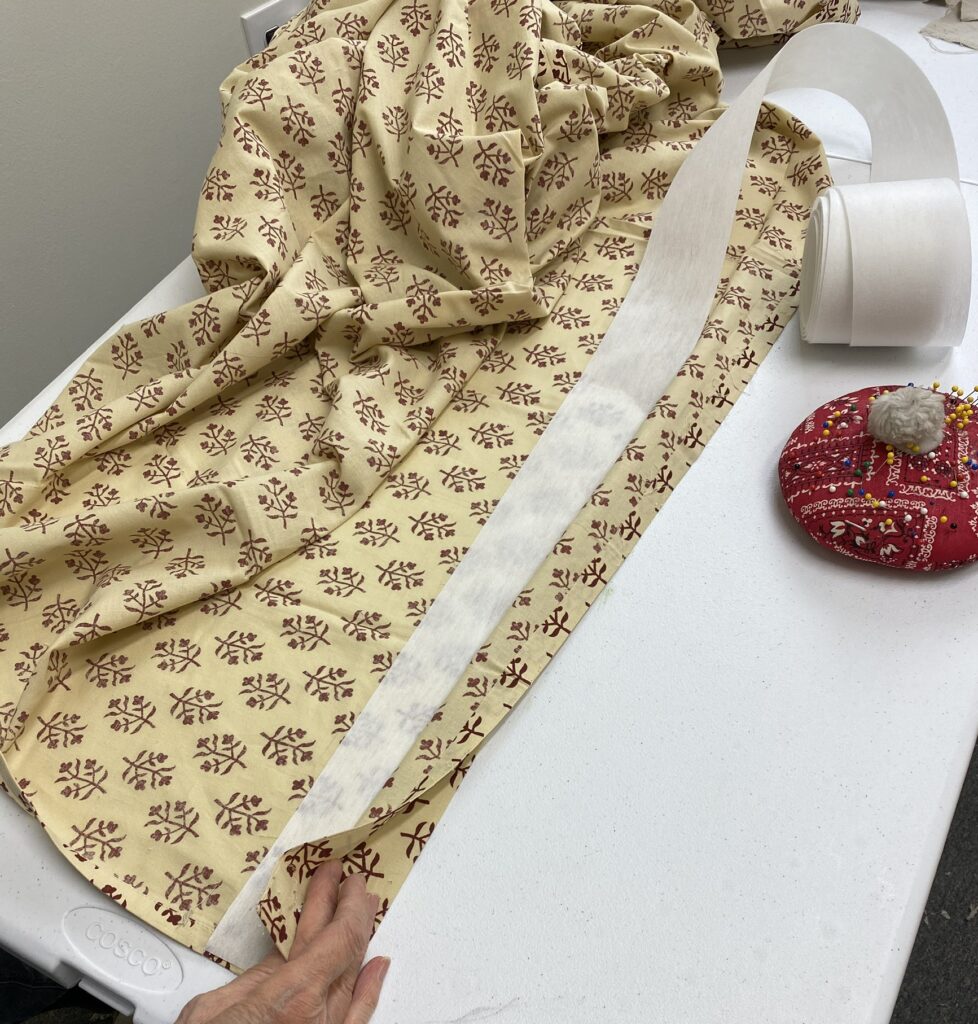
5. Now it’s time for a little math to figure out the placement of the pleats. I use a few “rules of thumb” to simplify this part of the process:
Number of pleats – For the number of pleats, a rule of thumb is about 1 pleat for every 4 inches of opening width. Keep in mind that you will have 2 curtain panels for the window so divide your opening width into 2. My opening width is 60 inches so each panel has to cover 30 inches. When I divide 30 by 4 inches, I get 7.5 pleats I can choose to round down to 7 pleats or round up to 8 pleats. The more pleats, the fuller the curtain so I chose 8 pleats for each panel.
Number of spaces between pleats – This will always be 1 less than the number of pleats. So for 8 pleats, I have 7 spaces.
Width of spaces between pleats – the rule of thumb for spaces is 3 to 5 inches between pleats.
CALCULATIONS
Here’s how to do all the calculations using my curtains as an example.
1.Subtract 3 inches from the curtain panel because your first and last pleats should be about 1.5 inches from the ends of the fabric. (this can be increased if necessary but we’ll get to why you might want to do that later)
79 (width of curtain panel) – 3 = 76 inches
2.Subtract one-half of the width of the window (because each panel will cover half the window opening) from the number from step 1.
76 – 30 = 46 inches
3.Divide the number from step 2 by the number of pleats.
46 ÷ 8 = 5.75 inches
This means that each pleat will take 5.75 inches. This number should not be larger than 6 inches. If it is, then you’ll need to add a pleat and repeat this calculation.
4.Take the number from step 1 and subtract the number from step 2.
76 – 46=30 inches
5.Divide the number from step 4 by the number of spaces (remember the number of spaces is always one less than your number of pleats).
30 ÷ 7 spaces = 4.29 inches
This number should be in the range of 3 to 5 inches. If your spacing falls outside of this range, you’ll need to adjust the size of the pleats or add or subtract a pleat.
6.I find it much easier to round the numbers up or down to the nearest half inch. Just be sure that the total still equals the total panel width in Step 1 (79 inches in my example). I rounded all the pleats down to 5 inches and all the spaces up to 5 inches. For a total of 75 inches. Since I ended up with 4 inches left over (79-75=4) I increased the recommended 1.5 inches on each end to 2 inches. (Another little trick is to simply make your last pleat on each end slightly larger so as to absorb the extra half inch or so.) Now my numbers add up to the original 79 inches. It’s best to work this out on paper. Here’s how the pleats and spaces worked out for each of my 2 curtain panels:
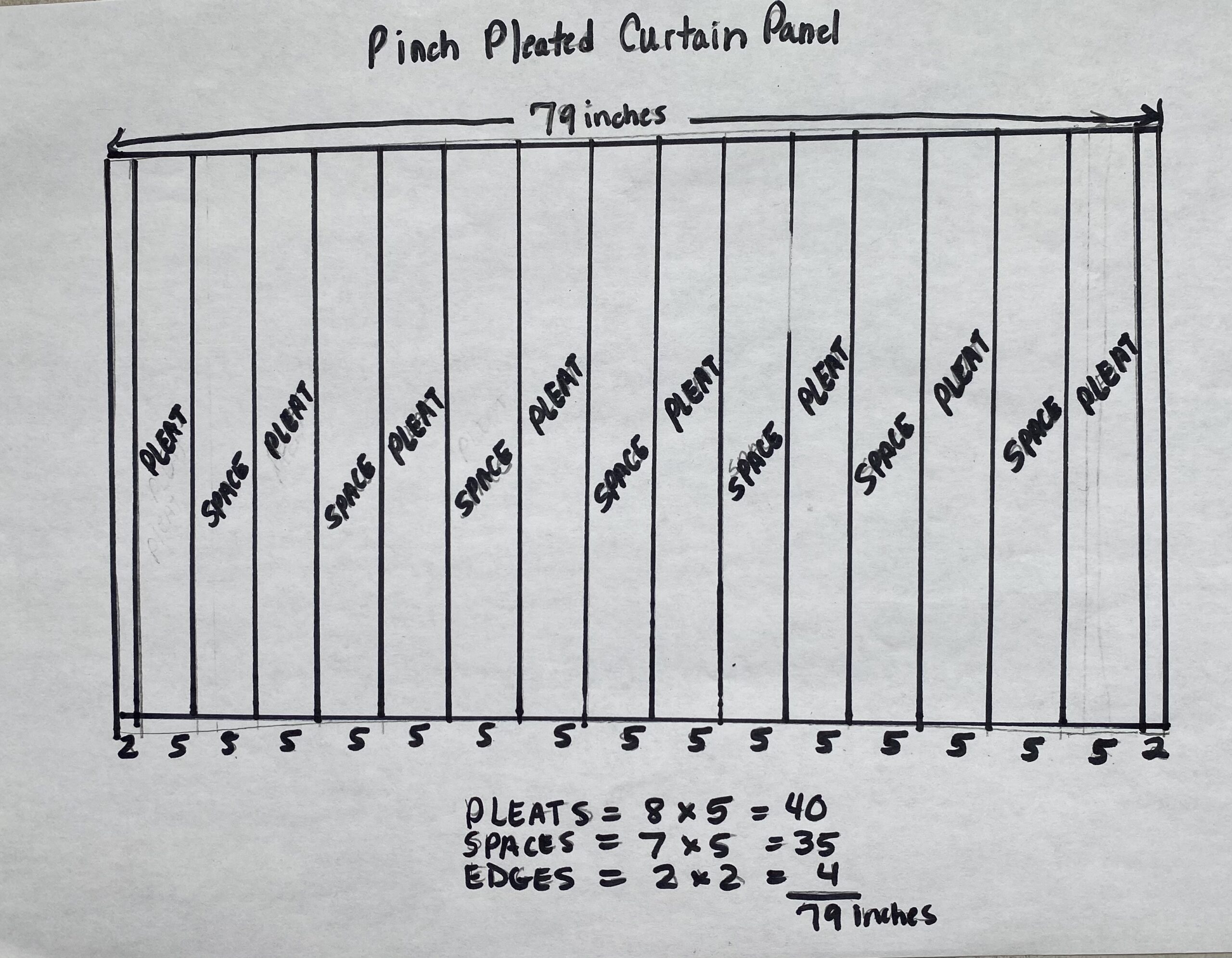
SEWING THE PLEATS
1. Using a fabric marker, mark the position for each pleat and space on the wrong side of your curtain. You can even write on the fabric to identify which is a pleat and which is space if you like.
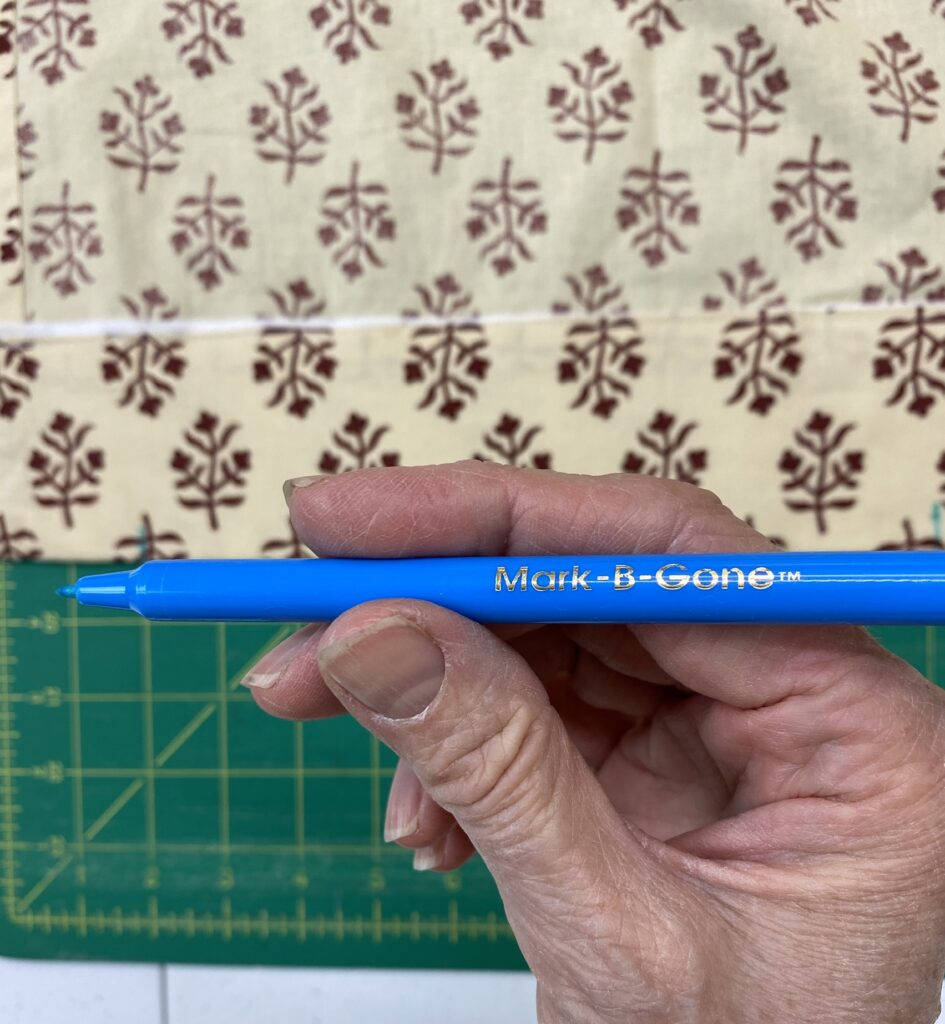
My first mark is at 2 inches because I am starting my first pleat 2 inches from the edge. Normally this is 1.5 inches but I needed to added a little bit to make my measurements work out right.
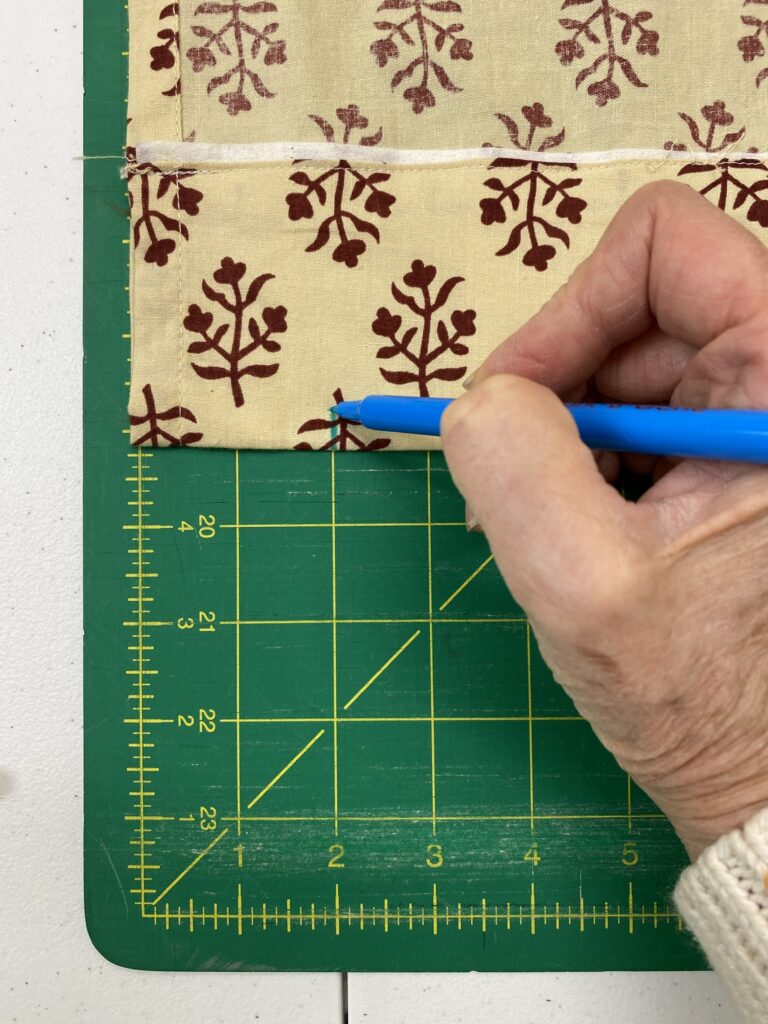
Then I marked across the fabric every 5 inches for each pleat and space.
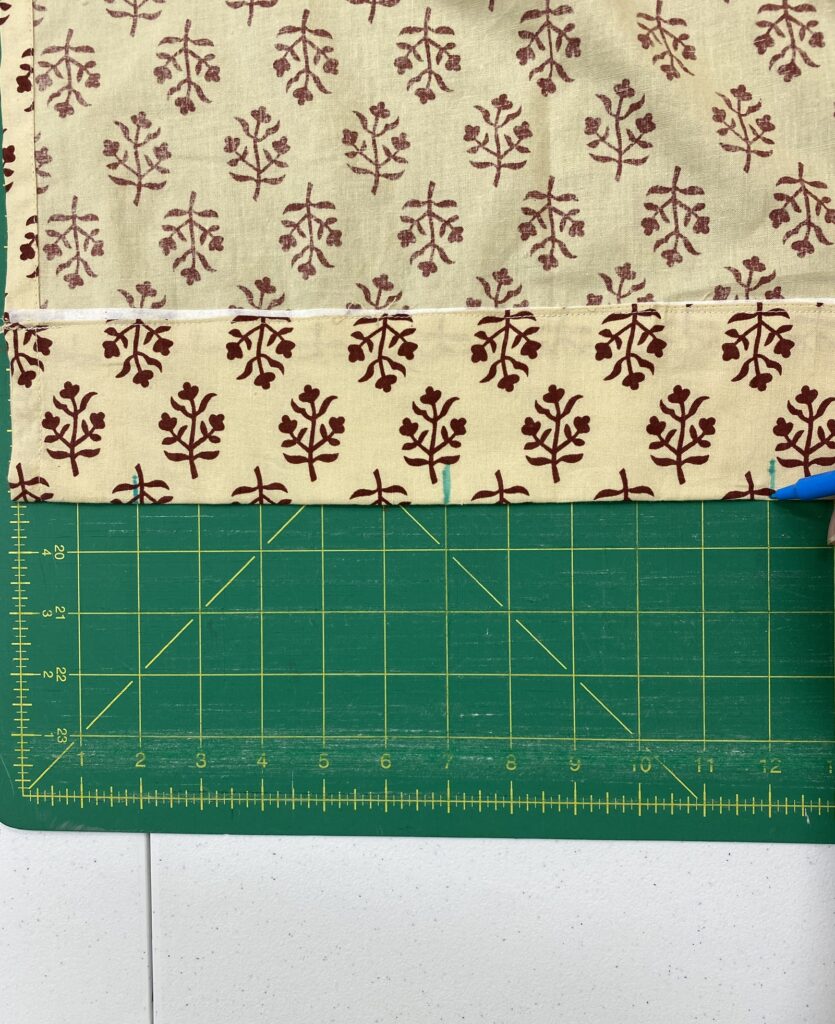
2. Then, fold your first pleat, matching the marks on the wrong side of the curtain. Insert a pin to hold in place. Do this for all your pleats.
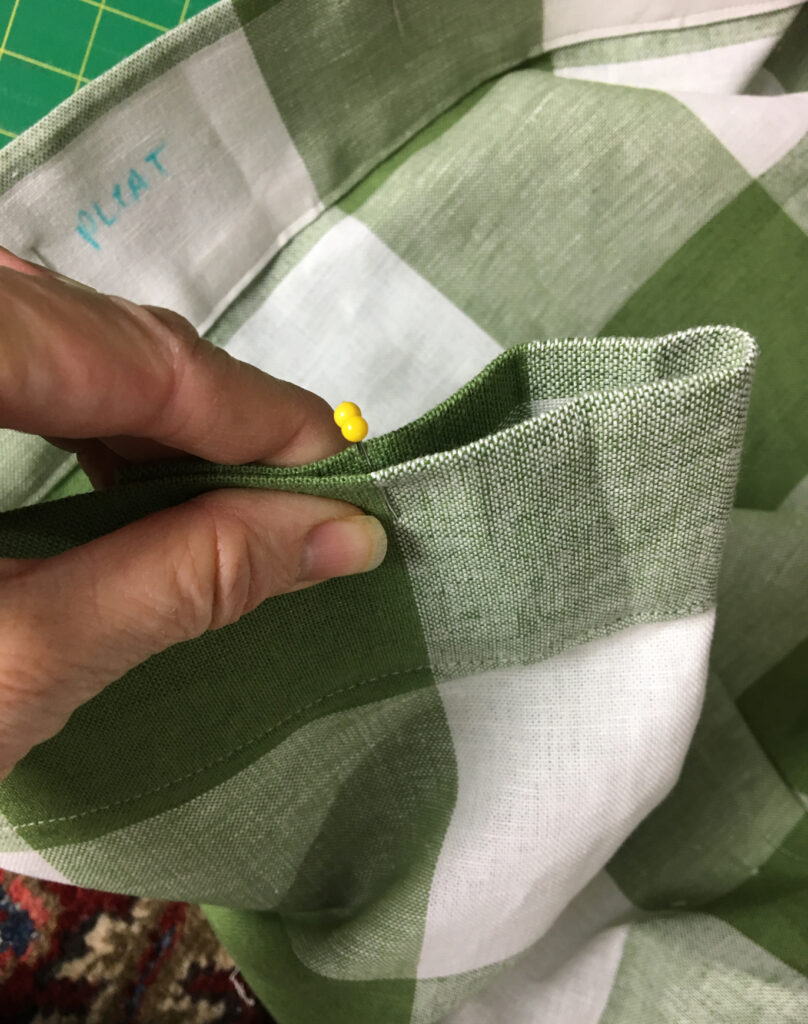
3. Sew down from the top of the pleat to the bottom of the buckram. A great tip here is to cut a piece of cardboard that is the same depth and length of the pleat and use it as a guide as you sew each pleat.
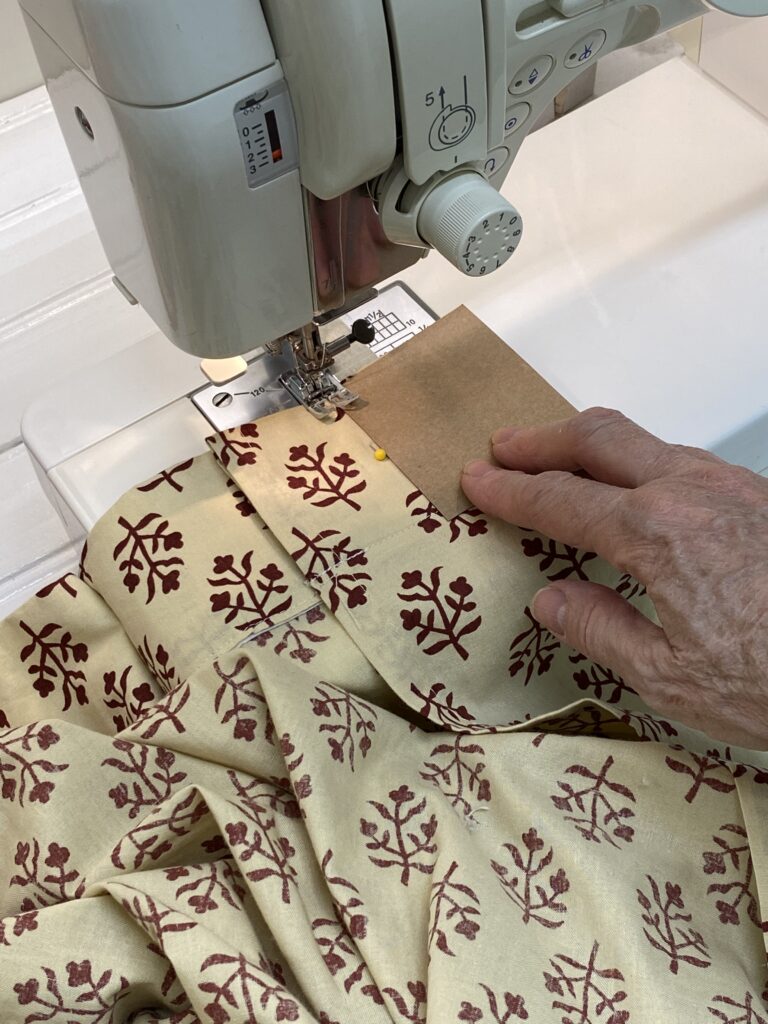
4. Now is a good time to hold the panel up to your window and double check to see that it covers at least half the window. If it doesn’t, you’ll need to rip out the first and last pleats and make them a little smaller than the others. Better to rip out a few stitches now than find out when you go to hang the curtains that they don’t close fully.
5. To form the pinch pleat, pinch the center of each pleat so as to form three sections that are roughly equal. Push down against the seam that you sewed to create the pleat.
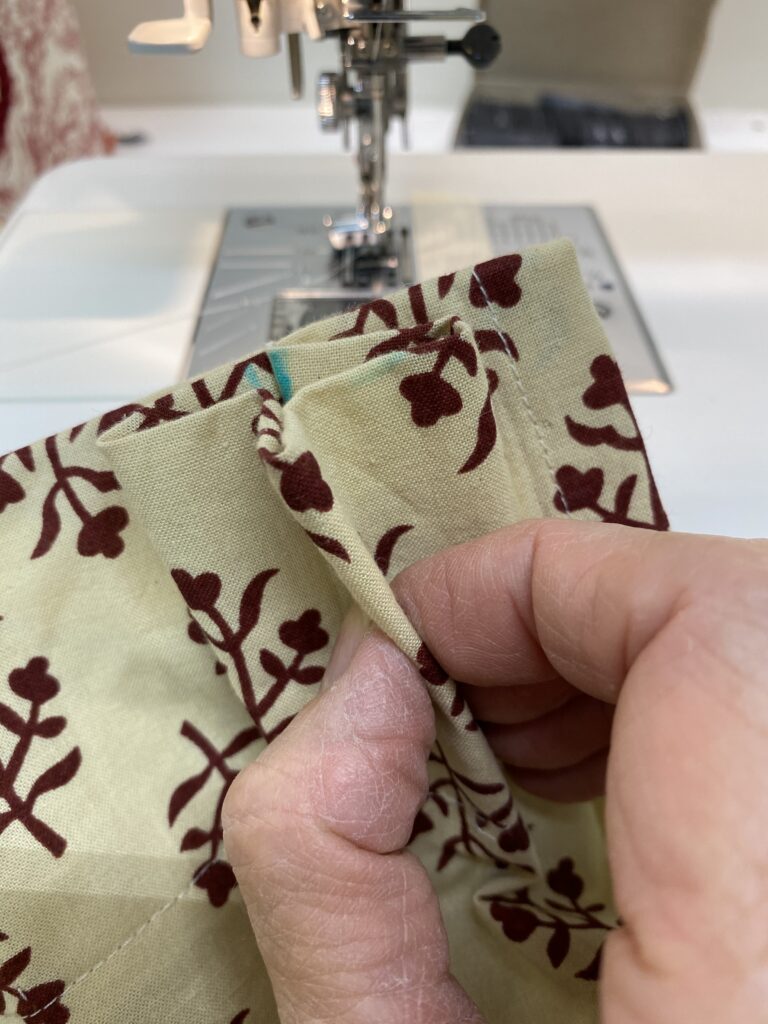
6. Finger press the pleat and hold all three sections of the pleat together like this.
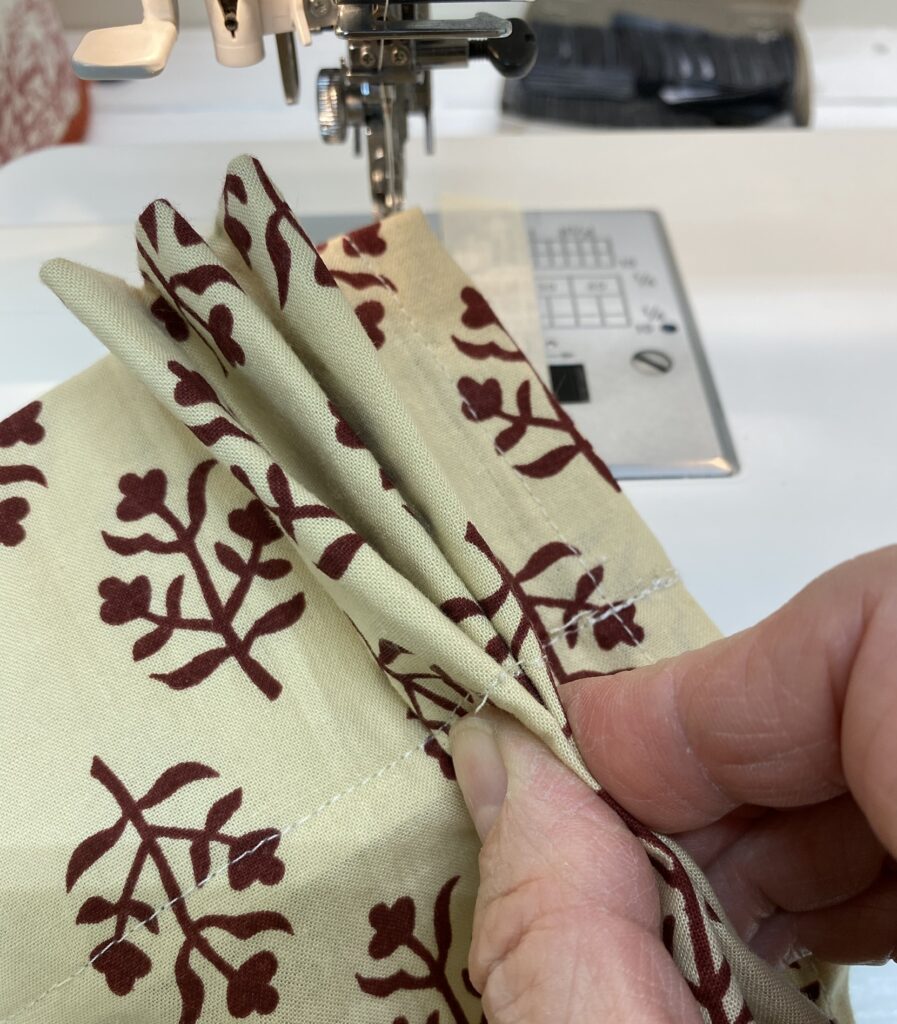
7. Sew across the bottom of each pleat from your vertical stitching line to the front of the pleat. (I find that a zipper foot works easier).

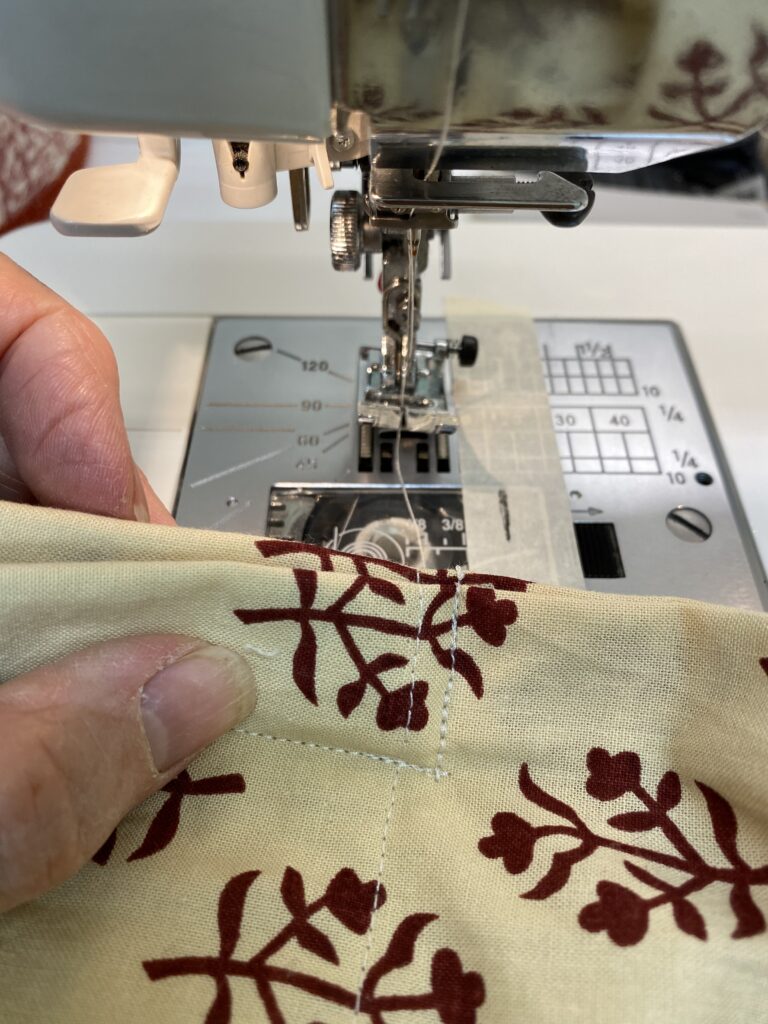
8. For each pleat, lay the center fold of the pleat to the right and sew down about 1 inch from the top of the pleat.
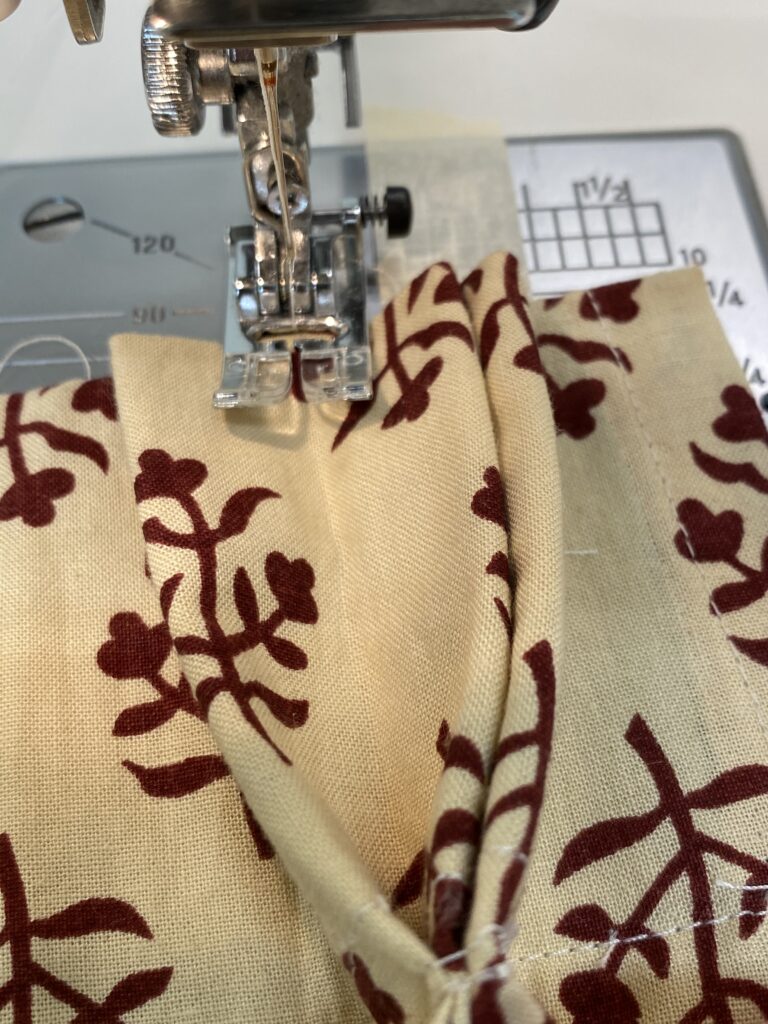
9. Then lay the center fold of the pleat to the left and sew down about 1 inch from the top of the pleat. Repeat for all pleats.
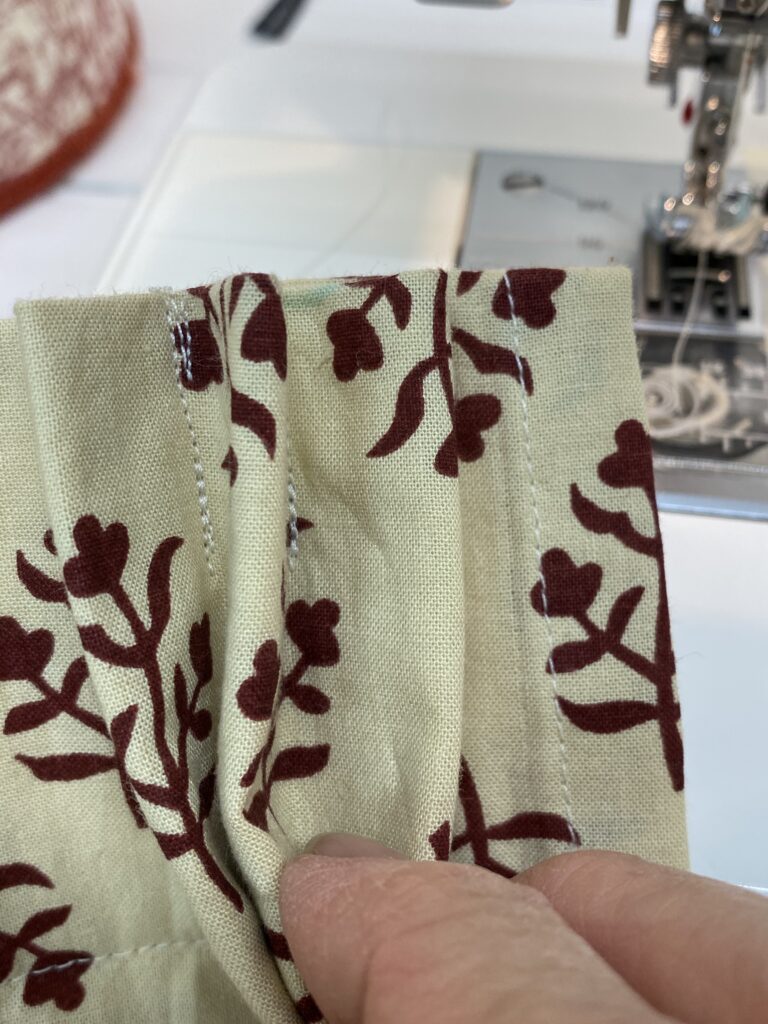
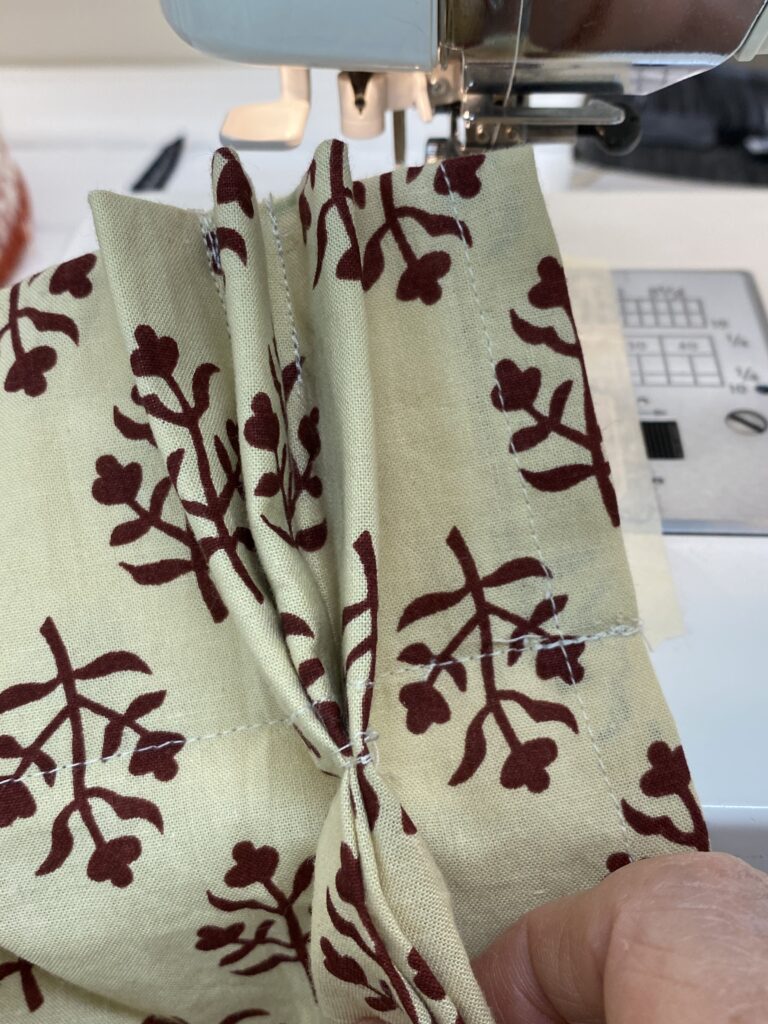
HANGING THE CURTAINS
I use this type of drapery hook (available on Amazon or at a Joann Fabrics) and insert it about 1.5 inches down from the top of the pleat on the reverse side. You can mark the spot to insert the hook with your fabric marker to be sure they are all inserted at the same height.
I used 1.5 inch diameter rings from Target and removed the clips. The clips aren’t needed because the curtain hooks get inserted directly into the rings.
After hanging the curtains on the rod, I finger press the folds of the fabric formed by the pleats all the way down the length of the curtain. I used ribbon to loosely tie them in 3 places to get the folds to stay. After 2 days, I removed th ties and the folds stayed nicely.
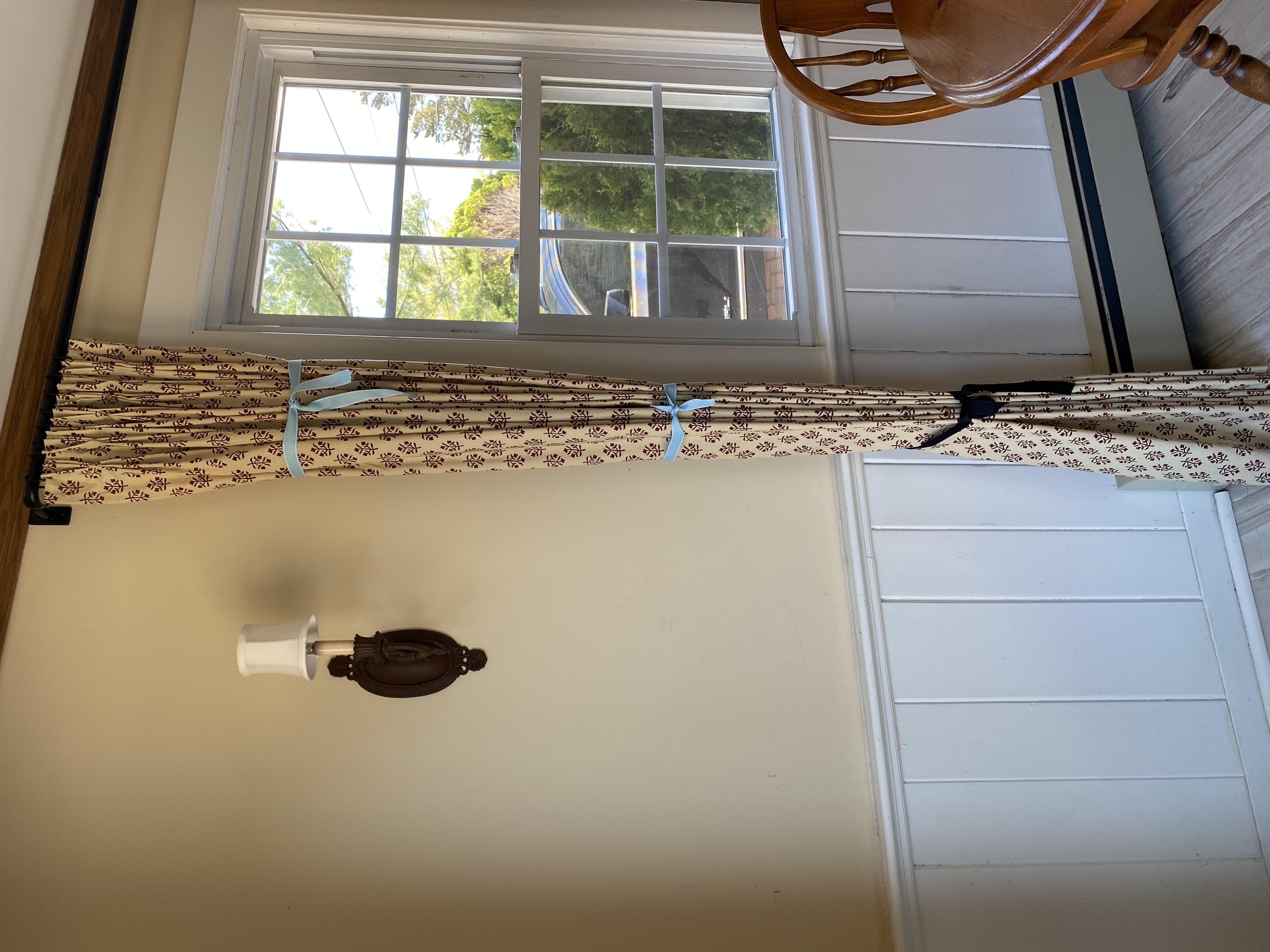
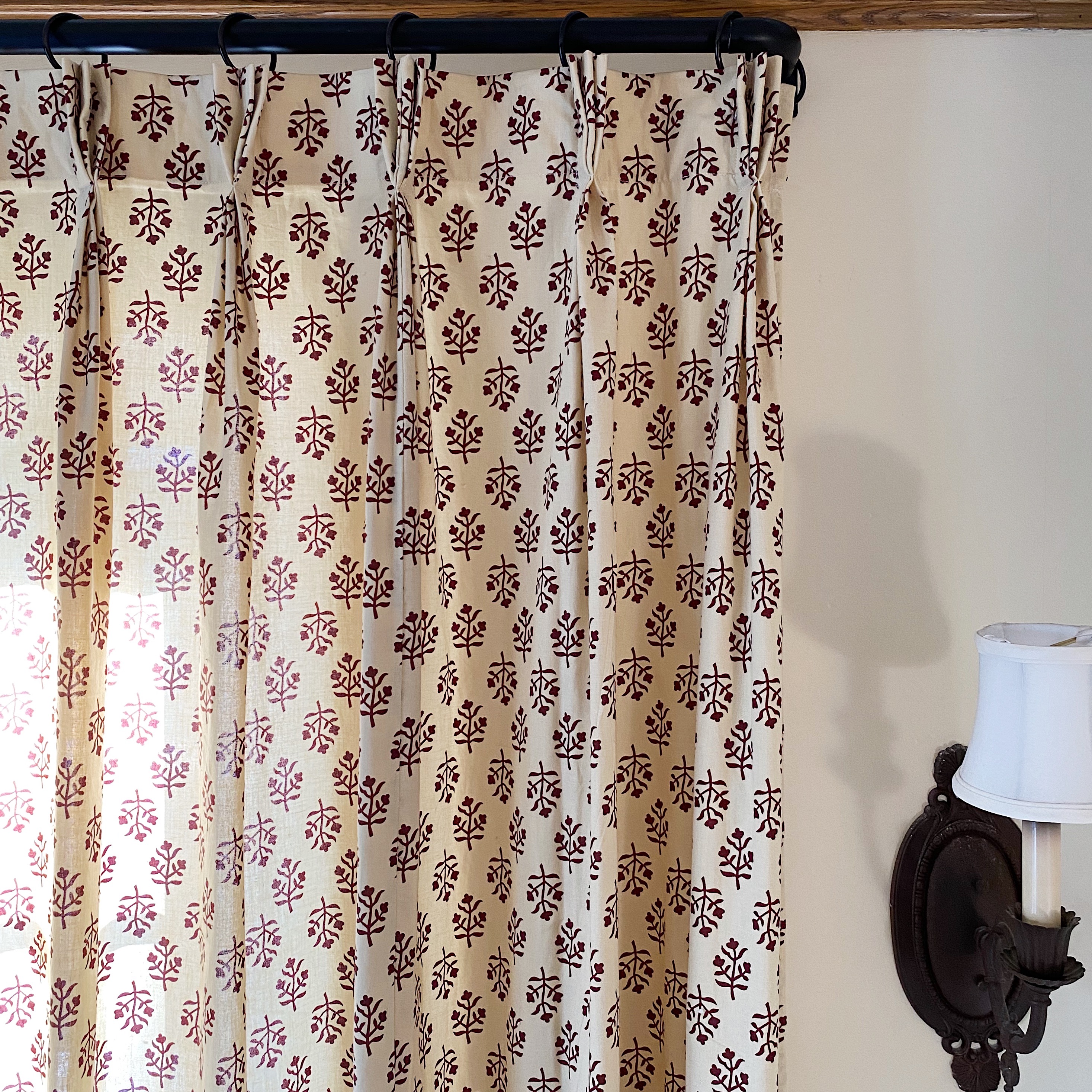
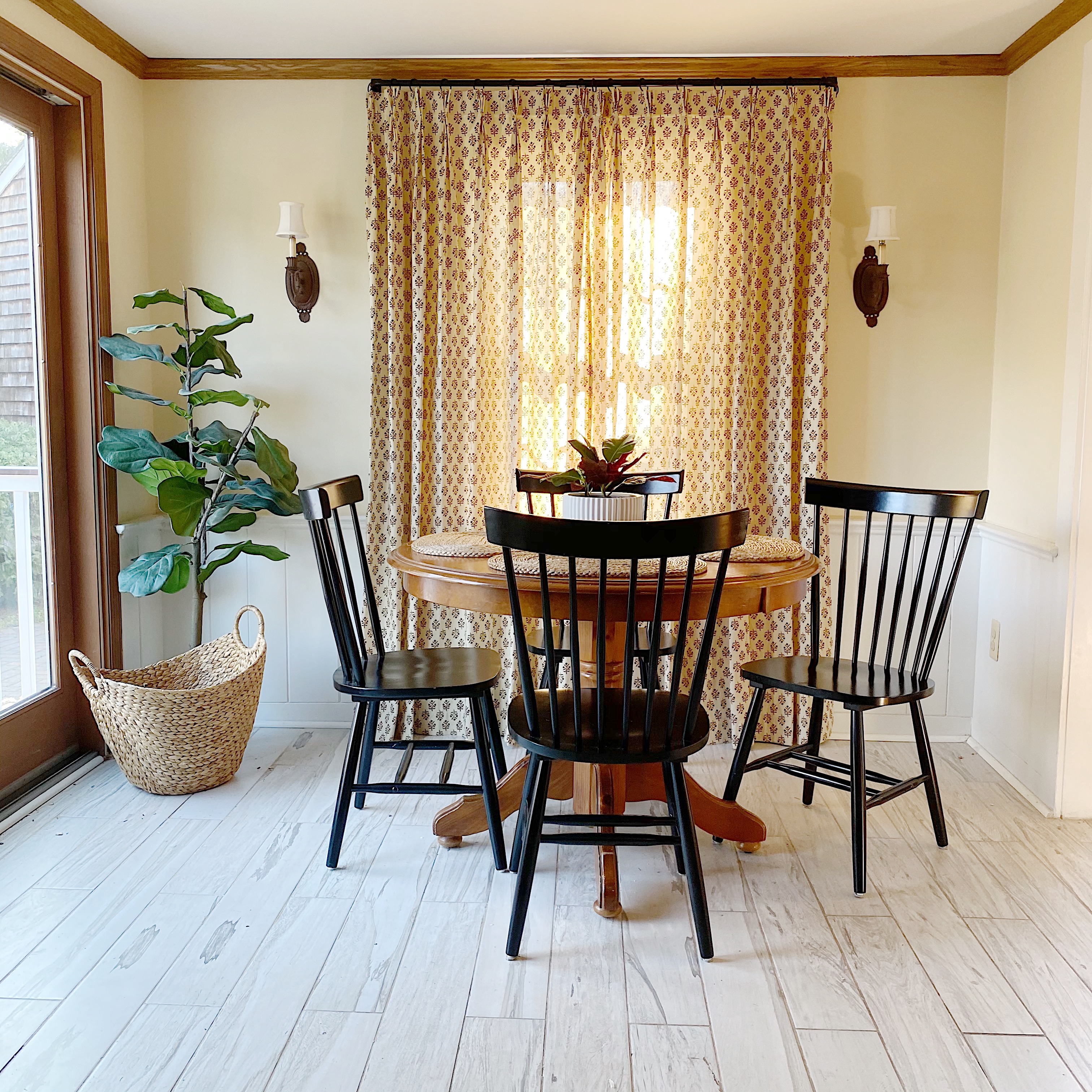

Before After
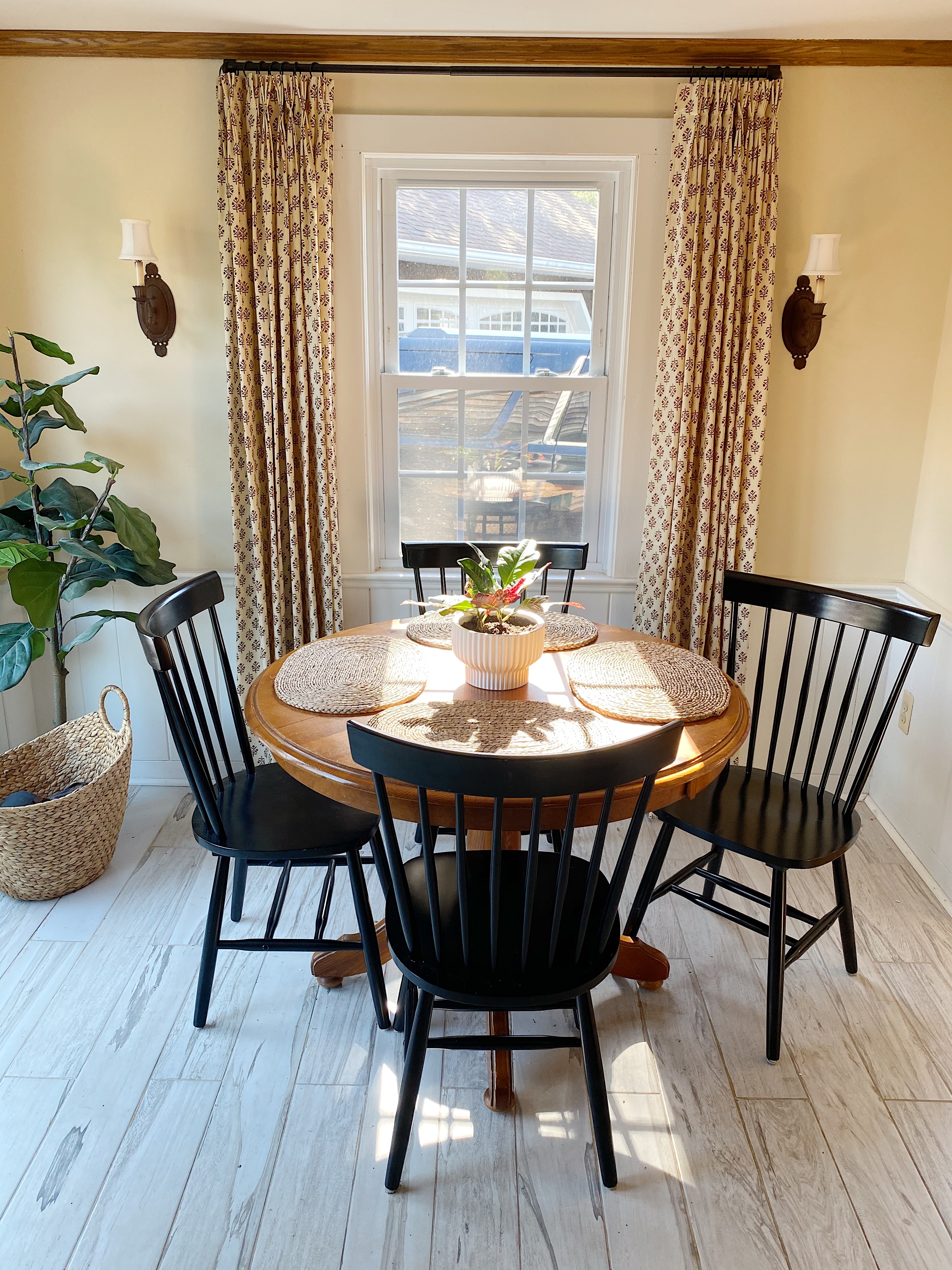
P.S. Shortly after I finished the curtains, I scored the black Windsor chairs on FB Marketplace!
Happy sewing and thrifting!
Debra

